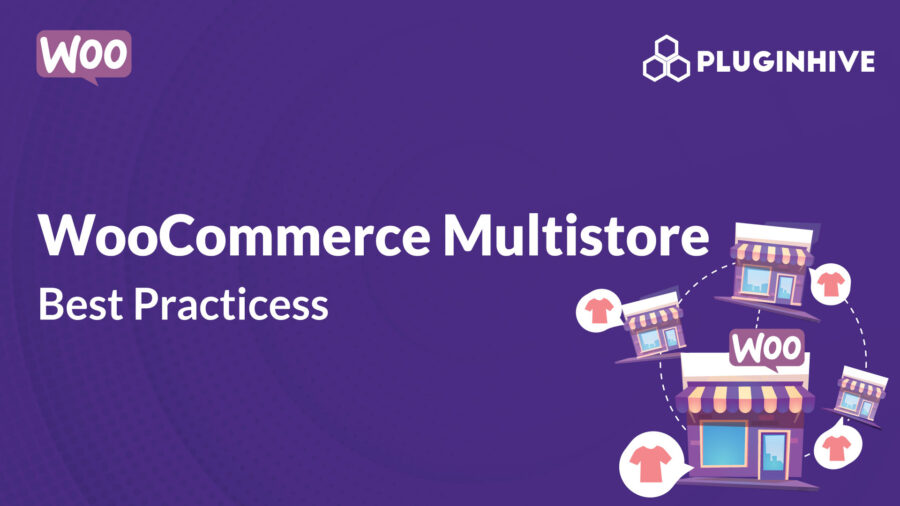WooCommerce Multistore functionality allows businesses to scale their operations across diverse niches and geographic regions. However, navigating the complexities of managing multiple stores under the WooCommerce umbrella requires more than just technological prowess—it demands strategic planning, efficient execution, and adept management.
In this article, we will discover WooCommerce Multistore management, exploring the best practices, tools, and strategies that businesses can employ to streamline operations. Whether you’re a budding entrepreneur considering expansion or an established business seeking to optimize your existing multi-store framework, this article serves as your comprehensive roadmap to success.
On this page
- Definition and Concept of WooCommerce Multistore
- Features and Benefits of Using WooCommerce Multistore
- Types of WooCommerce Multistore Setups
- Plugins to Create & Manage WooCommerce Multistore
- Best Practices for Managing WooCommerce Multistore
Definition and Concept of WooCommerce Multistore
Within WooCommerce, the Multistore functionality represents a sophisticated system that enables businesses to manage and operate multiple online stores from a single centralized platform. This innovative feature empowers business owners and enterprises to create and administer distinct storefronts, each tailored to specific product lines, demographics, or geographical markets. It also allows businesses the flexibility to cater to diverse customer segments or product categories while maintaining a consistent brand presence and administrative control.
Features and Benefits of Using WooCommerce Multistore
The adoption of WooCommerce Multistore brings a ton of features and advantages, each contributing to the seamless management and optimization of a multi-store environment. These include:
- Centralized Control
Administrators gain a unified dashboard to oversee and manage all connected stores, simplifying tasks such as product updates, order tracking, and inventory management across the network.
- Scalability and Flexibility
Businesses can expand their reach and diversify their offerings by creating multiple storefronts without the need for separate installations, thus saving time and resources while accommodating varied business strategies.
- Customization and Localization
Tailoring each store to specific audiences becomes effortless, allowing for personalized branding, language preferences, pricing adjustments, and targeted marketing campaigns.
- Streamlined User Experience
Customers benefit from a consistent shopping experience, accessing various stores seamlessly through a unified user account, cart, and checkout process.
Types of WooCommerce Multistore Setups
WooCommerce Multi-store setups can take on diverse structures based on the business’s objectives and operational requirements. These configurations may include:
Niche-oriented Stores
WooCommerce’s Multi-Store functionality facilitates the creation of dedicated storefronts tailored to specific product lines or niche markets. For instance, a fashion retailer might operate separate stores for high-end luxury apparel, casual wear, and accessories. By segmenting products into distinct stores, businesses based on WooCommerce can focus marketing efforts, tailor user experiences, and optimize product showcases for each niche, thus enhancing customer engagement and conversions.
Geographically Targeted Stores
Businesses operating across different regions or countries can benefit from geographically targeted stores facilitated by WooCommerce Multi-Store. These stores can be tailored to suit the unique preferences, languages, currencies, and cultures of specific markets. This approach enables businesses to optimize their marketing strategies, pricing models, and product offerings according to the needs and expectations of local customers.
Franchise or Multi-Brand Stores
Companies managing multiple brands or franchises can utilize WooCommerce Multistore to maintain distinct online identities for each brand while consolidating administrative control. This setup allows for brand independence in terms of branding, product offerings, and marketing strategies while streamlining management tasks under one centralized platform.
Plugins to Create & Manage WooCommerce Multistore
Managing a network of WooCommerce stores efficiently often requires the integration of specialized tools and plugins tailored to streamline operations, enhance control, and maximize productivity across multiple storefronts. These tools play a pivotal role in simplifying administrative tasks, ensuring synchronization, and optimizing management workflows within a complex multi-store ecosystem.
Some of the plugins tailored for multi-store management include WooCommerce Multistore, WooCommerce Global Cart, WordPress Multisite plugin for WooCommerce, and WooCommerce Multisite Product Sync. WooCommerce merchants can choose from these plugins based on their business requirements.
Best Practices for Managing WooCommerce Multistore
Managing multiple stores within the WooCommerce framework demands a strategic approach that encompasses various aspects of organization, inventory, customer management, and performance monitoring. Implementing best practices ensures streamlined operations and optimal growth across the multi-store environment.
Multistore Organizational Strategies
- Creating a Coherent Structure for Multiple Stores
Establishing a clear and cohesive organizational structure is crucial. Define hierarchies, designate store managers, and draft responsibilities to ensure seamless operations across all stores within the network.
- Assigning Roles and Permissions Effectively
Precisely defining roles and permissions is crucial for maintaining control and WooCommerce store security. Assign permissions based on responsibilities, allowing authorized personnel access to specific functionalities while restricting unnecessary access to sensitive areas.
- Implementing Centralized Management Tools
Utilize dedicated management tools like WooCommerce Multistore and WooCommerce Global Cart plugins to centralize control. These tools empower administrators with a unified dashboard, streamlining tasks like product updates, order management, and reporting across multiple stores.
WooCommerce Product and Inventory Management
- Synchronization of Product Listings Across Stores
Ensure consistency across stores by synchronizing product details, descriptions, pricing, and availability. This synchronization minimizes discrepancies and provides customers with a seamless shopping experience across all storefronts.
- Inventory Tracking and Management Strategies
Implement robust inventory tracking mechanisms. Utilize tools like WooCommerce Stock Manager and WooCommerce Product CSV Import Suite to track stock levels, manage inventory efficiently, and prevent stockouts or overselling issues.
WooCommerce Order and Customer Management
- Streamlining Order Processing Workflows
Optimize order processing workflows to expedite fulfillment. Automate processes wherever possible, implement order management systems, and utilize plugins that enhance WooCommerce order processing and shipping efficiency.
- Managing Customer Databases Across Stores
Centralize customer databases or utilize integrations that sync customer data across stores. This approach ensures a consistent customer experience and enables personalized interactions based on comprehensive customer insights.
- Implementing Customer Segmentation and Targeted Marketing
Leverage customer segmentation strategies using tools within WooCommerce. Segment customers based on behavior, preferences, or purchase history to tailor marketing campaigns, offering personalized experiences that drive engagement and conversions.
Performance Monitoring and Analytics
- Tracking Sales and Performance Metrics for Each Store
Monitor key performance indicators (KPIs) specific to each store. Track WooCommerce sales data and conversion rates individually to assess the performance and profitability of each storefront.
- Utilizing Analytics Tools to Identify Trends and Opportunities
Utilize analytics tools such as WooCommerce Google Analytics Integration and WooCommerce Reports & Dashboard extensions to derive insights. Analyze trends, identify customer behavior patterns, and discover opportunities for improvement or expansion within the multi-store setup.
- Taking Data-Driven Decisions for Each Store’s Growth
Base strategic decisions on data-driven insights gathered from analytics. Utilize the information to formulate growth strategies, optimize marketing efforts, and allocate resources effectively for the expansion and enhancement of each store within the WooCommerce multi-store network.
Conclusion
In conclusion, managing WooCommerce Multi-Store environments requires organizational structures, streamlined operations, and data-driven decision-making. This guide has provided key insights into effective practices, emphasizing the significance of synchronized operations, optimized management tools, and leveraging analytics for growth.
By implementing these practices, businesses can boost consistency, efficiency, and sustained growth across their multi-store networks. Embracing these strategies and utilizing specialized tools will empower businesses to navigate the complexities of multi-store management and drive success within the WooCommerce platform.




